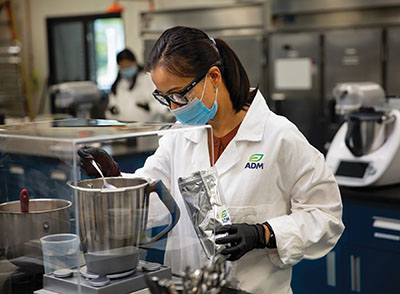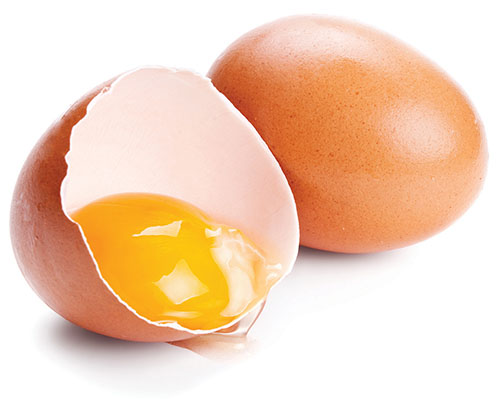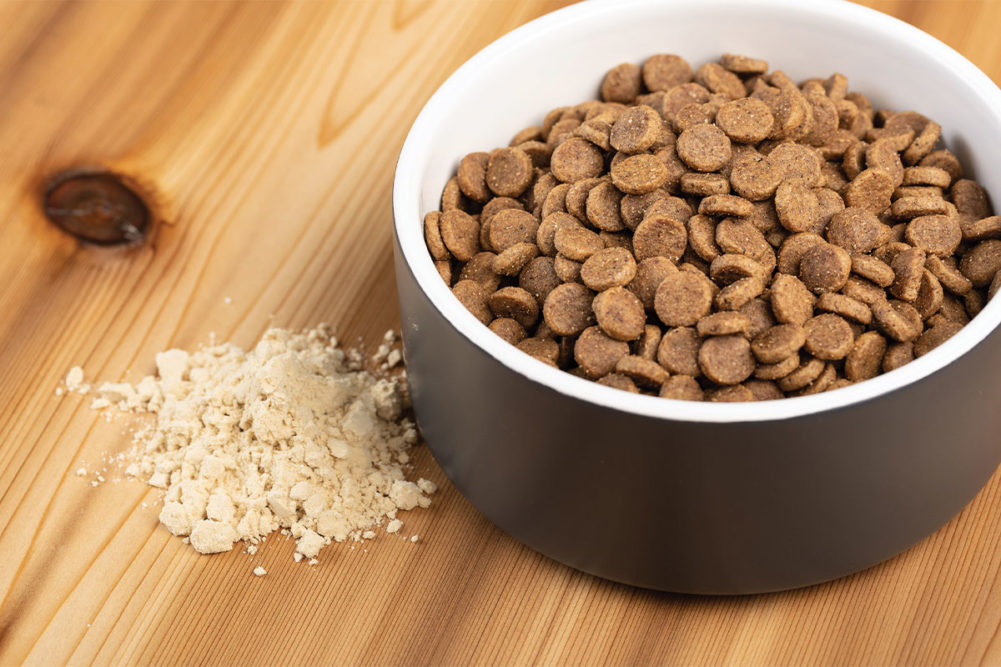This article was published in the September 2022 issue of Pet Food Processing. Read it and other articles from this issue in our September digital edition.
Binders are the glue used to combine ingredients in pet foods and treats, building structure and improving expansion while offering varied performance qualities depending on the choice of texturant.
Binders offer solidity and strength, ensuring the product does not fall apart when it’s packed, transported or served. Binding can also benefit texture and mouthfeel with the ability to coagulate and form gels.
Role of binders
Binders used in pet food and treats can be viewed in two categories — process and product quality, according to Chad Harris, director, global marketing, Nutrios, Symrise, Teterboro, NJ. Both categories have a direct influence on the appearance and shelf life of the finished product.
When applied as a process, binders enable manufacturers to optimize systems through the improvement of mixing, blending, binding and cooking steps. This process also helps reduce waste/non-conformance material. When it comes to product quality, binding plays a significant role in overall product yield by controlling factors such as shrinkage, moisture and fat loss.
Dry pet foods, or kibble, typically have less meat protein with a high percentage of carbohydrates. Binding in dry food assists with increasing chew time and reducing breakage while creating consistent and uniform structures and shapes. In biscuits, binders help bind fat to lower product density, boost structure and strength, and create a crisp texture.
As the amount of meat addition increases, as in the case of ultra-high, meat-inclusive extruded diets, egg-based binders help with kibble quality and binding to generate consistently high-quality dry food.
“Novel binders are also more versatile in a sense that they allow manufacturers to use them in several different formulas and in existing systems,” said Chad Harris, director of global marketing at Symrise’s Nutrios division.
In the case of wet canned pet foods and gravies, binders can maintain viscosity during filling and retorting to provide firmness, structure and water/fat binding to offer stability throughout an extended shelf life. Wet food has a high percentage of meat protein and minimal carbohydrates as compared to dry food. Moisture makes up as much as 75% to 78% with the majority of nutrients in the remaining 22% to 25%. Binders hold ingredients together as the product moves through the process of blending, cooking and canning before reaching the end customer.
In canned meat loaf applications, starches, flours and protein can provide instant moderate-to-high viscosity and act as clean-label thickeners. These ingredients can also improve machinability while providing good water/fat binding properties to retain moisture, resulting in firmness, structure and stability throughout extended shelf life.
In extruded and injection molded treat applications, binders can provide hard and short structure. This helps with maintaining shape, improving extrusion efficiency, reducing breakage and increasing chew time. These binders also help modify texture, reduce viscosity and lower product density.
Working with starches
Traditional binders like starches, flours, gums and proteins made from plant and animal sources are used frequently. Common starches include corn, ancient grains (including amaranth, quinoa, millet, buckwheat, barley, sorghum and oat), wheat, rice and tapioca.
In extruded kibble and treats, high-starch ingredients influence texture, density and shape. Starches also influence the desired texture in wet food applications — such as pâté with proper accents, chunks and gravies — and can act as a thickener for the formulation. These binders provide instant moderate-to-high viscosity and thickening in semi-moist treat applications and improve machinability while also providing good binding properties and moisture retention.
When mixed with water and heated, the starch molecules swell because of water binding. When cooked, starch is highly digestible and a readily available energy source for dogs and cats. In most applications, it’s nearly impossible to create any finished pet food product with the desired texture and appearance without one or more starch ingredients in the formulation, according to Jennifer Adolphe, Ph.D., companion animal technical manager, ADM Pet Solutions, Chicago.
 ADM has worked with the University of Illinois to analyze potential pet food ingredients including ancient grains. (Source: ADM Pet Solutions)
ADM has worked with the University of Illinois to analyze potential pet food ingredients including ancient grains. (Source: ADM Pet Solutions)
Starch sources also have different physical, chemical and functional properties based on their amylose and amylopectin content, which can vary due to plant sources, geography, growing conditions and crop varieties. High-amylose starches generally require increased water injections during extrusion, as well as elevated barrel temperatures and increased shear to enhance the degree to which the starch is cooked.
Conversely, amylopectin’s structure has a higher water-holding capacity, making it more susceptible to denaturation, reduced shear and lower cook temperatures than amylose. Thus, a balance of amylose and amylopectin is necessary to produce kibbles that are structurally sound while also achieving the desired shape, size and density.
Novel approach
Those in search of another clean label option can look to novel egg-based binders. Egg offers excellent binding capabilities, immunity boosters and growth-promoting nutrients of a first-class protein, and a complete amino acid profile when formulating. A heat treatment step activates the binding functionality.
Symrise produces egg-based binders through its Nutrios brand, which deliver the nutritional benefits of protein concentrations with binding and emulsification ingredients for functional applications. Chicken ingredients include premium-quality protein, broth and fat for dry and wet formulations.
“Novel binders are also more versatile in a sense that they allow manufacturers to use them in several different formulas and in existing systems,” Harris said.
While egg is an excellent binder, it’s not a universal choice for every application. One reason being cost, another functionality. Binders produced by fermentation offer an alternative to products made from animal, dairy and seafood. Egg white protein produced by fermentation is used in bakery, wet food, dry food and coating applications.
 Egg makes an excellent binding ingredient, however, it is not ideal for every application due to cost and overall functionality. (Source: ©ANDRIIGORULKO - STOCK.ADOBE.COM)
Egg makes an excellent binding ingredient, however, it is not ideal for every application due to cost and overall functionality. (Source: ©ANDRIIGORULKO - STOCK.ADOBE.COM)
“Unlike traditional binders, these products can be produced nearly anywhere in the world using local biomass, which are sustainable with a much lower carbon dioxide footprint,” said Patrick Luchsinger, marketing manager, nutrition and pet food, Ingredion, Inc., Westchester, Ill. “As the technology gets better and better, these novel products may become more available and functional than other applications.”
Plant-based binders
Humans who follow a plant-based diet look for similar plant alternatives for their pets. Ingredion manufactures starches from raw materials such as tapioca, potato, pea and rice. This includes flours from raw tapioca, rice, pea, lentil and chickpea; protein from pea and lentil raw materials; and gum and gum systems.
Plant-based proteins such as soy and pulses (peas, lentils, chickpeas and beans) can provide texture for wet food applications. These on-trend plant ingredients include pre-gelling forms for pulses and starches, and pre-cooked beans offer added functionality and nutrition in product development, Adolphe said.
“As the technology gets better and better, these novel products may become more available and functional than other applications,” said Patrick Luchsinger, marketing manager of nutrition and pet food, Ingredion.
Ingredion also manufactures pea protein concentrates and isolates for protein enhancement and binding. Pea protein’s use in a dry food/kibble provides protein enrichment and a binding agent for consistent, uniform shape and structure. When used in a canned meat loaf, pea protein provides firmness, fat binding and boosts protein.
Allergens and allergies
Although some historical trends have driven the industry to reduce formulation with corn, soy and wheat, research conducted on ADM’s proprietary consumer insights platform, Outside Voice, indicates 80% of pet owners intentionally seek or are at least open to products based on soy, corn and wheat.
“Consumer preference and acceptance for these ingredients expands the options from which formulators can choose to create pet food and treats with the texture pets desire and the nutrition pet parents demand,” Adolphe said.
As products relate to food allergies in dogs and cats, incidents are unknown. Veterinary research shows cases are infrequent, according to the Pet Food Institute. Any binder used must be evaluated for the potential of adverse reaction because of hypersensitivity or food intolerance before incorporation into pet food or treats.
Emerging binders
Moving forward, Harris predicts ongoing movement toward sustainable and cleaner label pet food, along with changes in regulations, which will create opportunity to bring new binding solutions to the market.
Ingredion recently launched a new clean-label binder with modified starch functionality based on waxy cassava. In wet pet food, HOMECRAFT CREATE 365 multifunctional tapioca flour delivers viscosity, low-temperature stability and enhanced appearance in canned gravy applications. The waxy cassava product is comparable to a traditional PO waxy corn starch, Luchsinger said.
Through its partnership with the University of Illinois, ADM has analyzed various ancient grains. Increasingly popular, ancient grain varieties offer unique water-holding capacity, starch gelatinization, dough formation, viscosity and final product traits.
Best practices
Improving best practices and final product traits is dependent on the application and binders used. Harris recommended ensuring the binder is compatible with the current pet food manufacturing system. Depending on the type of pet food being produced, it’s important to determine what nutritional benefit the binder will add or take away from the formula. Another important consideration is to ensure there’s little to no variability in the material and that the process is generating consistent binding functionality.
 Starches are one of the most commonly used binder ingredients in pet food. But depending on the source of the starch, the ingredient can have different physical, chemical and functional properties, which can affect how the starch is used. (Source: ADM Pet Solutions)
Starches are one of the most commonly used binder ingredients in pet food. But depending on the source of the starch, the ingredient can have different physical, chemical and functional properties, which can affect how the starch is used. (Source: ADM Pet Solutions)
Luchsinger advised that when a starch is used as a binder, it will function as a binder only when it has gelatinized; ungelatinized starch has no binding power. For gums, adequate hydration of the hydrocolloids is critical. Depending on the product, some gums are cold-water soluble, and others are only soluble after heating to a certain temperature. Other gums may need ions to gel, and the way ions are introduced is also important.
Adolphe advocated taking a joint approach to working together from start-to-finish to define requirements and characteristics of the end product. Technical starch experts can provide guidance on selecting the starch that best fits a formulation and on optimal formulations and processing conditions to ensure an acceptable end product.
Working with the supplier to understand the underlining mechanism for the binder to work can help pet food manufacturers save money, enhance protein content, increase digestibility, and improve binding and emulsification properties.
Read more about product development, ingredients and formulation.




